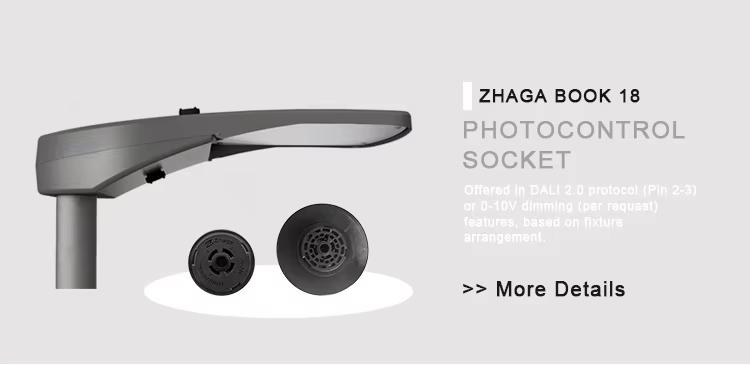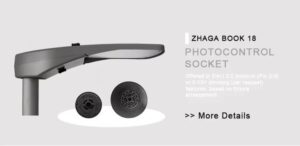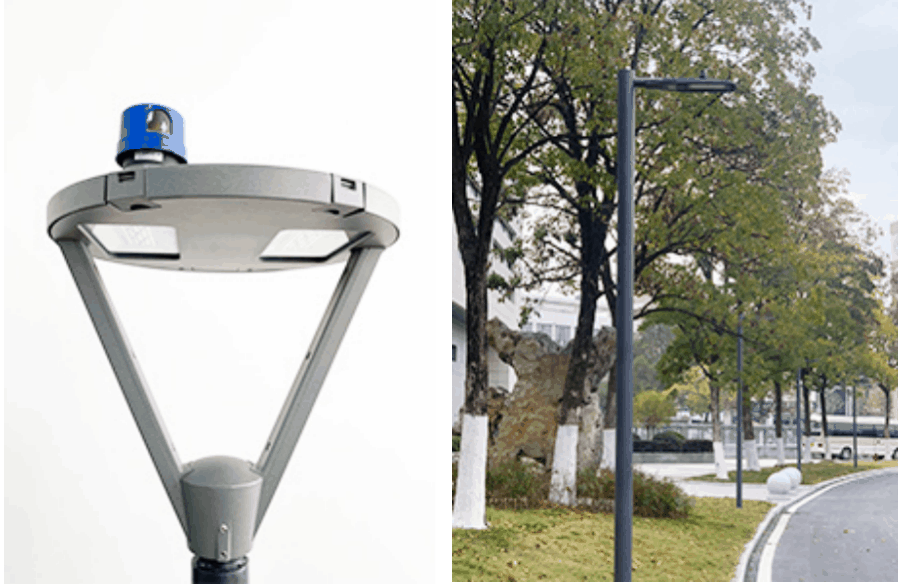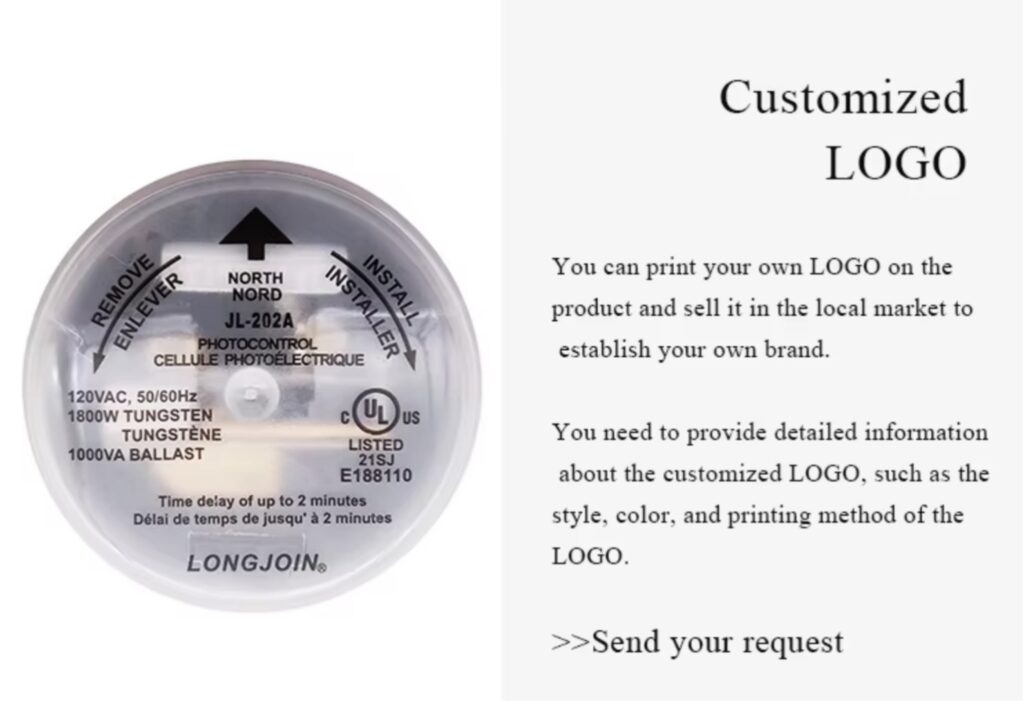Outline
- Introduction
- How Does a Fully Modular Zhaga-Based Streetlight System Work?
- What Functions Does the Zhaga Smart Controller Module Perform?
- How Does the Wireless Antenna Module Enable Remote Connectivity?
- What Is the Internal Electrical Architecture Behind Zhaga Streetlights?
- Why Are Cities and Manufacturers Moving Toward Zhaga-Based Systems?
- How Can Long-Join Help You Transform Streetlights into Smart Infrastructure?
- What’s the Future of Smart Lighting with Zhaga Architecture?
- Final Words
Why are smart cities turning to Zhaga for street lighting? Because traditional systems lack flexibility and scalability. Zhaga Book 18 changes that by making lighting control truly modular. It connects sensors with wireless modules and LED drivers, ultimately making one plug-and-play system.
The result? Energy-efficient and future-ready streetlights. If you’re exploring intelligent lighting architecture, this guide reveals how Zhaga makes it all possible—one module at a time.

How Does a Fully Modular Zhaga-Based Streetlight System Work?
Zhaga Book 18 defines a standardized interface for outdoor LED luminaires and plug-and-play sensor or communication nodes. A luminaire is built with a Zhaga receptacle—sealed and compact—which accepts interchangeable modules (photocell sensors, communication devices, or blank caps). This creates a future-proof and upgradeable lighting node.
Here is a comparison table outlining key differences between Zhaga Book 18 and the NEMA interface.
| Feature | Zhaga Book 18 | NEMA 7-Pin |
| Pin Configuration | 4 or 5 pins | 7 pins |
| Form Factor | Compact, low-profile | Larger, dome-style |
| Installation Type | Side or top mount | Top mount only |
| Interoperability Focus | Indoor & outdoor smart nodes | Outdoor photocells and sensors |
| Power Output | 24V DC (auxiliary) | 120–277V AC |
| Use Case | Smart city, IoT lighting | Traditional streetlight control |
Breakdown of Physical Layers & Interfaces
- Mounting interface: Ø 30 mm twist-lock socket in top or side position.
- Pin configuration: 4-pin (power, DALI‑2/D4i data, auxiliary logic) supplying 24 V DC and bidirectional control.
- Environmental protection: IP66 rated when a certified module or cap is fitted.
Interaction Between Photocell Sensor, LED Driver & Communication Module
The sensor module, i.e, is a photocontroller, uses the 24 V DC and DALI bus to:
- Measure ambient light or detect motion
- Send dimming commands via DALI‑2
- Transmit data or mesh signals to a network
The LED driver receives DALI‑2 instructions to adjust brightness or report status. A separate communication module like LoRa or Zigbee can be added in a dual-node configuration. All pieces connect modularly: swap a dimming sensor with a communication node—no rewiring needed.
What Functions Does the Zhaga Smart Controller Module Perform?

Ambient Light Sensing for Auto On/Off
The Zhaga uses a built-in outdoor LED light controller photocell to detect ambient light levels. It automatically turns streetlights on at dusk and off at dawn via DALI or 0–10 V commands. LongJoin’s all products are highly effective in optimizing energy usage.
Motion Detection via PIR or Microwave Sensors
Many modules include PIR or microwave sensors for presence detection. When motion is sensed, they send real-time dimming commands to the driver. For instance, LongJoin’s JL-7 series triggers an instant light boost upon detection and dims when idle.
Wireless Protocol Compatibility
Zhaga light controllers often feature integrated wireless chips. LongJoin modules support Bluetooth mesh through Zhaga Book 18 sockets. They can also be equipped for Zigbee group control and remote settings.
Integration of Optional Sensors
Advanced devices include environmental sensors alongside light and motion detection. LongJoin’s PIR sensor supports daylight harvesting, plus optional modules for temperature or other data. This enables richer analytics and adaptive control behaviors.
Plug-and-Play Capability via Zhaga Book 18 Socket
All functionalities are built into self-contained modules. Install by simply twisting-locking into the Zhaga Book 18 receptacle. Compliance with Zhaga-D4i ensures hot-pluggable upgrades without rewiring.
How Does the Wireless Antenna Module Enable Remote Connectivity?
Communication Standards Supported
The Zhaga antenna module supports multiple LPWAN and short-range protocols. It commonly includes:
- LoRaWAN for kilometers-long links
- Zigbee mesh for local group control
- NB‑IoT or LTE‑Cat‑M1 for cellular reach
This diversity lets cities choose the most reliable network for their layout. Here is a table further explaining wireless protocols supported by Zhaga Antenna module.
| Protocol | Frequency Band | Range (Approx.) | Typical Use | Mesh Support | Power Usage |
| LoRa | 868/915 MHz | 2–10 km | Long-range smart grid | No | Very low |
| Zigbee | 2.4 GHz | 50–100 m | Short-range, mesh networks | Yes | Low |
| NB-IoT | LTE bands | 1–10 km | Carrier-based IoT | No | Low–Medium |
| BLE | 2.4 GHz | 10–50 m | Commissioning/config | No | Very low |
Command & Data Exchange with Control Centers
Modules relay DALI‑2 commands and status updates over the air. They receive schedule, dimming, and firmware updates from a central server.
Telemetry, such as voltage, current, power factor, and lamp faults, is sent back. This enables remote diagnostics and proactive maintenance.
Group Lighting Control & Mesh Networking
Zigbee modules form self-healing mesh networks across luminaires.
- LoRaWAN supports star topology with long-range links.
- NB‑IoT manages point-to-cloud setups.
This architecture enables group adjustments for zones, streets, or patterns, without rewiring.
Real-Time Monitoring & Diagnostics
Modules track key metrics such as voltage and power factor. They detect faults and abnormal operations right away. Gateways or cellular links send alerts for fast action. Dashboards display real-time status, logs, and even GPS-based location in supported models.
What Is the Internal Electrical Architecture Behind Zhaga Streetlights?

Power Distribution
Zhaga streetlights receive standard AC power via L (live), N (neutral), and PE (protective earth). Inside, the LED driver converts this to low-voltage DC.
A dedicated 24 V auxiliary output is routed through the Zhaga Book 18 socket to power add-on modules—no separate wiring required.
LED Control Lines
The LED driver outputs to LEDs using LED+ and LED– terminals. These handle high-current DC to control light output. These lines are isolated from the Zhaga socket, enabling safe modular insertion without disrupting LED power.
DALI Signal Lines
Zhaga Book 18 incorporates a two-wire DALI bus (DA+ and DA–) through the socket for digital control. Sensor modules and wireless nodes send lighting commands over DALI‑2/D4i and receive diagnostic data, like errors or power usage.
System Layout Ensuring Modular Plug‑In Compatibility
- The Zhaga receptacle supports four pins: 24 V, DALI, DALI–, and a general-purpose logic I/O.
- It uses a sealed, twist-lock design rated IP65/66, enabling tool-less hot-plug operations and safe module swaps.
- Both luminaires and modules carrying Zhaga-D4i certification ensure full interoperability without any rewiring.
Why Are Cities and Manufacturers Moving Toward Zhaga-Based Systems?
Cities and luminaire makers are adopting Zhaga Book 18 because it simplifies upgrades, reduces costs, ensures interoperability, and delivers proven energy and IoT benefits. Here is a table detailing their key features and their benefits.
| Feature | Benefit |
| Modular design for upgrades | Easily swap outdated LED or light sensor modules without rewiring or changing fixtures |
| Interoperability through standards | Certified modules work across brands, reducing vendor lock-in and stock issues. |
| DALI‑2 support for full control | Enables bidirectional dimming, diagnostics, and system reconfiguration via software. |
| IoT-ready capabilities | 24 V power and DALI data allow smart modules to integrate seamlessly with city-wide networks. |
| Energy savings via smart scenes | Presence and daylight sensors reduce energy use by up to 50%+ in street and building lighting. |
How Can Long-Join Help You Transform Streetlights into Smart Infrastructure?

Long-Join offers a complete suite of Zhaga-compatible LED light controllers designed for outdoor lighting upgrades. Their product line supports motion detection, ambient sensing, and wireless protocols like Zigbee, LoRa, NB-IoT, and Bluetooth.
Benefits of Using Long-Join’s Zhaga-Compatible Solutions
- Fully compliant with Zhaga Book 18 and D4i standards
- Designed for fast deployment and tool-free replacement
- Offers ambient light + microwave + PIR sensor combinations
- Supports BLE, Casambi, Zigbee, or LoRa-based remote control
- IP65-rated housings ensure reliable outdoor performance
Long-Join also provides integration support for lighting manufacturers and city planners. For technical documentation or sample units, you can email or visit the official website.
What’s the Future of Smart Lighting with Zhaga Architecture?
Zhaga is expanding beyond Book 18. Book 20 introduces standardized sockets for indoor luminaires, even in metal housings, enabling any fixture to support smart modules via a universal interface.
Future Book 18 editions will add pole brackets and extended cable reach for retrofits on decorative fixtures.
Upcoming Books 24/25 enable NFC and BLE, allowing on-site reconfiguration of drivers and modules at any stage of lifecycle.
The future of smart lighting lies in Zhaga’s evolving modular standards. They promise fixtures that are easily serviceable, fully interoperable, and IoT-equipable.
Final Words
Zhaga architecture is setting a new standard for smart, modular street lighting. Its plug-and-play flexibility and IoT readiness make it ideal for future-proof urban infrastructure. For reliable Zhaga smart photocells, Chi-Swear offers Long-Join-certified solutions with trusted performance and expert support.
External Links
- https://www.zhagastandard.org/books/overview/smart-interface-between-outdoor-luminaires-and-sensing-communication-modules-18.html
- https://www.nema.org/
- https://www.dali-alliance.org/dali/keyfeatures.html
- https://en.wikipedia.org/wiki/0-10_V_lighting_control
- https://en.wikipedia.org/wiki/LoRa
- https://en.wikipedia.org/wiki/Zigbee
- https://en.wikipedia.org/wiki/Narrowband_IoT
- https://en.wikipedia.org/wiki/Bluetooth_Low_Energy
- https://en.wikipedia.org/wiki/IP_code






